Here you’ll find 48 Mammals that start with F, organized from “Antarctic Fur Seal” to “Sunda Flying Lemur”. These species include small gliders, burrowing rodents, arboreal primates and large marine predators found worldwide. Use this list as a quick reference for study, teaching, field ID and content creation.
Mammals that start with F are species whose common English names begin with the letter F. Many have cultural or economic roles, such as fur seals that shaped 19th-century sealing history.
Below you’ll find the table with Common name, Scientific name, Order and Habitat.
Common name: The everyday English name helps you recognize species quickly and match them to field guides or classroom materials.
Scientific name: The accepted Latin binomial points you to precise species information across scientific databases and literature.
Order: The taxonomic order shows broad evolutionary relationships and helps you compare ecological roles among related groups.
Habitat: A concise habitat label tells you where each species typically lives, aiding field planning and ecological comparisons.
Taxonomy note: Names follow commonly used scientific and English usage, and may reflect recent taxonomic updates or regional variants.
Extinct status: The list focuses on extant mammals; extinct or prehistoric species are omitted unless explicitly noted.
Last updated: 2025-10-29
Mammals that start with F
| Common name | Scientific name | Order | Habitat |
|---|---|---|---|
| Fennec Fox | Vulpes zerda | Carnivora | Desert |
| Arctic Fox | Vulpes lagopus | Carnivora | Alpine |
| Red Fox | Vulpes vulpes | Carnivora | Forest, Grassland, Urban |
| Gray Fox | Urocyon cinereoargenteus | Carnivora | Forest |
| Island Fox | Urocyon littoralis | Carnivora | Forest, Grassland |
| Kit Fox | Vulpes macrotis | Carnivora | Desert, Grassland |
| Fin Whale | Balaenoptera physalus | Artiodactyla | Marine |
| False Killer Whale | Pseudorca crassidens | Artiodactyla | Marine |
| Fallow Deer | Dama dama | Artiodactyla | Forest, Grassland |
| Fisher | Pekania pennanti | Carnivora | Forest |
| Fishing Cat | Prionailurus viverrinus | Carnivora | Wetland |
| Flat-headed Cat | Prionailurus planiceps | Carnivora | Wetland, Forest |
| Fossa | Cryptoprocta ferox | Carnivora | Forest |
| Falanouc | Eupleres goudotii | Carnivora | Forest, Wetland |
| Fanaloka | Fossa fossana | Carnivora | Forest |
| Black-footed Ferret | Mustela nigripes | Carnivora | Grassland |
| Sunda Flying Lemur | Galeopterus variegatus | Dermoptera | Forest |
| Philippine Flying Lemur | Cynocephalus volans | Dermoptera | Forest |
| Southern Flying Squirrel | Glaucomys volans | Rodentia | Forest |
| Northern Flying Squirrel | Glaucomys sabrinus | Rodentia | Forest |
| Large Flying Fox | Pteropus vampyrus | Chiroptera | Forest |
| Indian Flying Fox | Pteropus medius | Chiroptera | Forest, Wetland, Urban |
| Spectacled Flying Fox | Pteropus conspicillatus | Chiroptera | Forest |
| Rodrigues Flying Fox | Pteropus rodricensis | Chiroptera | Forest |
| Mexican Free-tailed Bat | Tadarida brasiliensis | Chiroptera | Forest, Desert, Urban |
| Four-horned Antelope | Tetracerus quadricornis | Artiodactyla | Forest, Grassland |
| Giant Forest Hog | Hylochoerus meinertzhageni | Artiodactyla | Forest |
| Florida Panther | Puma concolor coryi | Carnivora | Forest, Wetland |
| Forest Elephant | Loxodonta cyclotis | Proboscidea | Forest |
| Fraser’s Dolphin | Lagenodelphis hosei | Artiodactyla | Marine |
| Finless Porpoise | Neophocaena phocaenoides | Artiodactyla | Marine, Freshwater |
| Antarctic Fur Seal | Arctocephalus gazella | Carnivora | Marine |
| Guadalupe Fur Seal | Arctocephalus townsendi | Carnivora | Marine |
| Northern Fur Seal | Callorhinus ursinus | Carnivora | Marine |
| Fat-tailed Dunnart | Sminthopsis crassicaudata | Dasyuromorphia | Grassland, Desert |
| Feathertail Glider | Acrobates pygmaeus | Diprotodontia | Forest |
| Fat Sand Rat | Psammomys obesus | Rodentia | Desert |
| Four-toed Elephant Shrew | Petrodromus tetradactylus | Macroscelidea | Forest, Grassland |
| Field Mouse | Apodemus sylvaticus | Rodentia | Forest, Grassland, Urban |
| Formosan Rock Macaque | Macaca cyclopis | Primates | Forest |
| Fox Mongoose | Cynictis penicillata | Carnivora | Grassland, Desert |
| Franklin’s Ground Squirrel | Poliocitellus franklinii | Rodentia | Grassland |
| Fringe-lipped Bat | Trachops cirrhosus | Chiroptera | Forest |
| Fulvous Fruit Bat | Rousettus leschenaultii | Chiroptera | Forest, Urban |
| False Water Rat | Xeromys myoides | Rodentia | Wetland |
| Forest Rabbit | Sylvilagus brasiliensis | Lagomorpha | Forest |
| Forest Shrew | Myosorex varius | Eulipotyphla | Forest |
| Forest Dormouse | Dryomys nitedula | Rodentia | Forest |
Descriptions
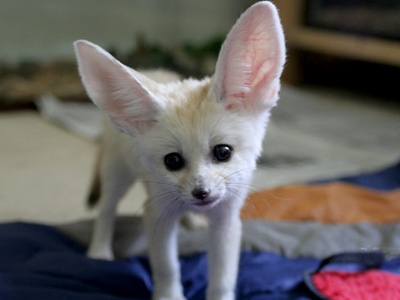
Fennec Fox
The world’s smallest fox, easily recognized by its enormous ears that help dissipate heat in its North African desert home. They are social, nocturnal animals living in small dens.
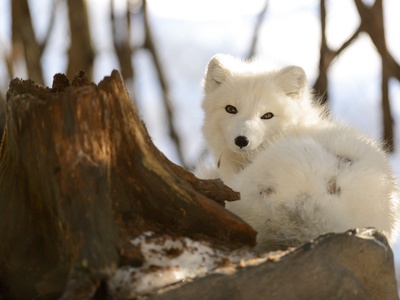
Arctic Fox
Known for its thick, warm fur that changes color with the seasons, from brown in summer to white in winter. It inhabits the cold Arctic tundra regions of the Northern Hemisphere.

Red Fox
One of the most widespread and adaptable carnivores on Earth. It is recognized by its reddish-brown coat, bushy tail with a white tip, and crafty reputation.
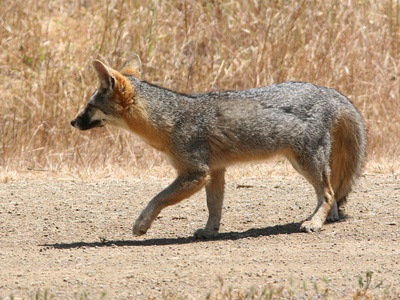
Gray Fox
Unique among canids for its ability to climb trees. It has a distinctive salt-and-pepper gray coat with reddish highlights and is found throughout North and Central America.
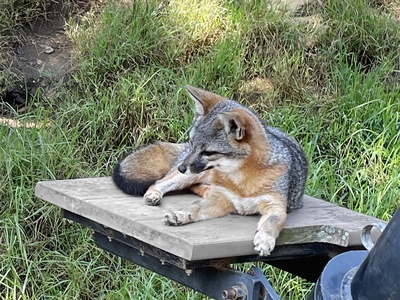
Island Fox
A small fox native to six of the eight Channel Islands off the coast of California. It is one of the smallest fox species in the world and a remarkable example of island dwarfism.

Kit Fox
A small fox of western North America, well-adapted to arid environments. It has large ears for cooling and is primarily nocturnal, preying on small rodents and insects.

Fin Whale
The second-largest mammal on Earth, often called the “greyhound of the sea” for its incredible speed. This baleen whale is found in all the world’s major oceans.
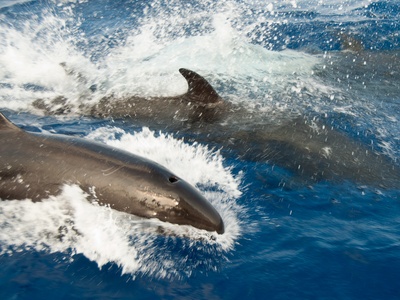
False Killer Whale
A large, social dolphin species with a dark, uniform coloration and a slender body. Despite its name, it is not a whale but one of the largest members of the oceanic dolphin family.
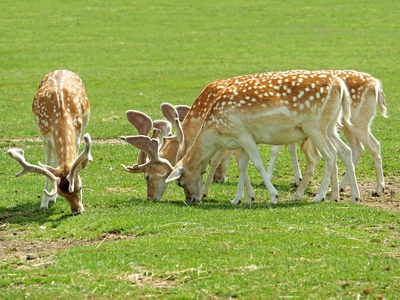
Fallow Deer
A graceful deer species known for the males’ broad, palmate antlers. Originally from the Mediterranean, it has been introduced widely and is often seen with a spotted coat.
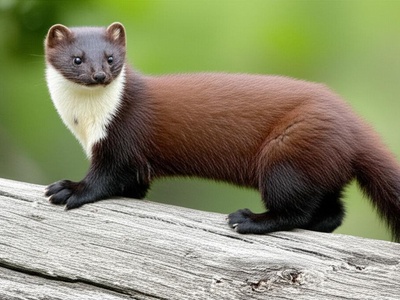
Fisher
A North American member of the weasel family, not a cat, and it doesn’t primarily eat fish. It is an agile climber and a fierce predator, known for hunting porcupines.

Fishing Cat
A medium-sized wild cat from Southeast Asia and the Indian subcontinent. It is a powerful swimmer with partially webbed paws, perfectly adapted for hunting fish in wetlands.
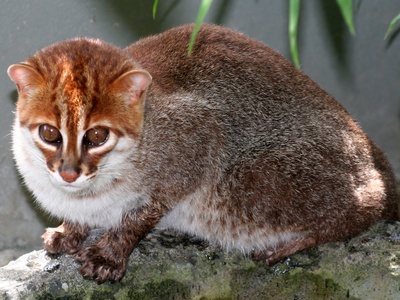
Flat-headed Cat
A small, rare wild cat from Southeast Asia with a uniquely flattened skull and semi-aquatic habits. It primarily hunts frogs, fish, and crustaceans along riverbanks and in swamps.
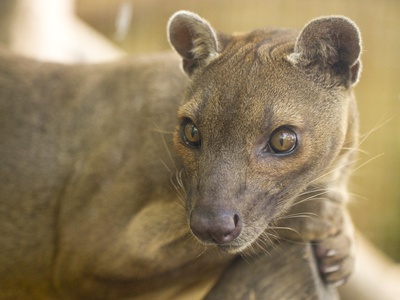
Fossa
Madagascar’s largest carnivore, a sleek, cat-like predator related to mongooses. It has a long body, short legs, and is an agile hunter of lemurs and other forest animals.

Falanouc
A small, mongoose-like carnivore endemic to Madagascar. It has a long snout and peg-like teeth adapted for a specialized diet of earthworms, slugs, and other invertebrates.
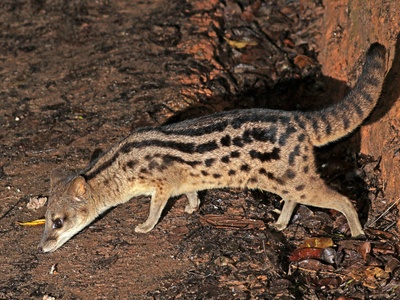
Fanaloka
A small, nocturnal carnivore from Madagascar, also known as the Malagasy civet. It has a striped and spotted coat, resembling a civet but belonging to a unique Malagasy family.
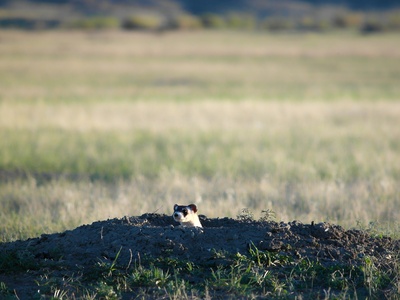
Black-footed Ferret
North America’s only native ferret, once thought to be extinct. This endangered species is a specialist predator of prairie dogs and a focus of major conservation efforts.

Sunda Flying Lemur
Not a true lemur, this mammal is a master of gliding. It uses a large skin membrane called a patagium to travel up to 100 meters between trees in Southeast Asian forests.
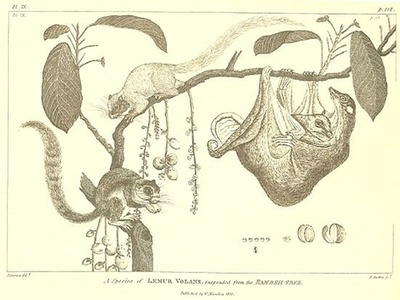
Philippine Flying Lemur
A nocturnal, gliding mammal found only in the Philippines. Like its Sunda relative, it is an herbivore that uses its skin membrane to soar through the forest canopy.

Southern Flying Squirrel
A small, nocturnal squirrel of North and Central America. It glides from tree to tree using a furry membrane between its wrists and ankles, feeding on nuts, insects, and fungi.

Northern Flying Squirrel
Slightly larger than its southern cousin, this squirrel inhabits the boreal and temperate forests of North America. It is a nocturnal glider essential for spreading truffle spores.
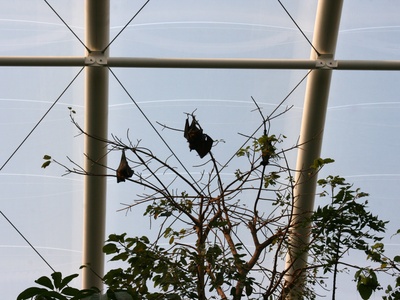
Large Flying Fox
One of the largest bats in the world, with a wingspan that can exceed 1.5 meters. It is a fruit-eating bat (frugivore) found in Southeast Asia, vital for pollination.
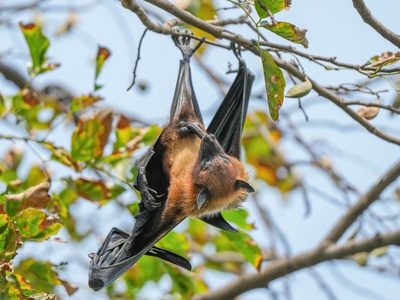
Indian Flying Fox
A large fruit bat native to the Indian subcontinent. These bats live in large, noisy colonies in trees, and play a crucial role as pollinators and seed dispersers.

Spectacled Flying Fox
Named for the pale fur around its eyes that resembles spectacles. This large fruit bat is found in northeastern Australia and New Guinea, where it feeds on nectar and fruit.

Rodrigues Flying Fox
A critically endangered fruit bat found only on the island of Rodrigues in the Indian Ocean. Conservation efforts have helped its population recover from near extinction.
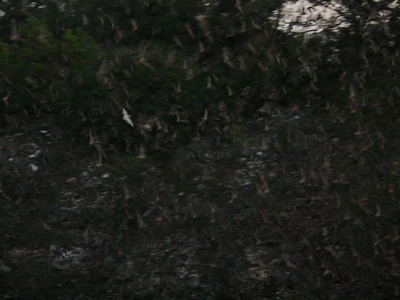
Mexican Free-tailed Bat
Famous for forming the largest mammal colonies on Earth. Millions emerge from caves at dusk to feed on insects, making them incredibly important for pest control.
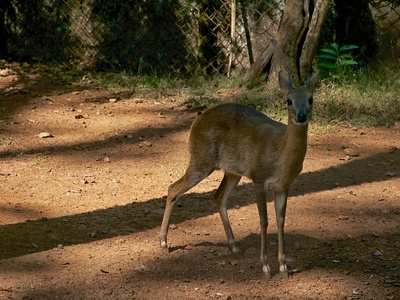
Four-horned Antelope
A small antelope from India and Nepal, unique for being the only bovid with four horns. Males have two small horns on their forehead in addition to the main pair.

Giant Forest Hog
The largest wild pig species in the world, found in the forests of Africa. It is a powerful, dark-haired animal that lives in small family groups, or sounders.
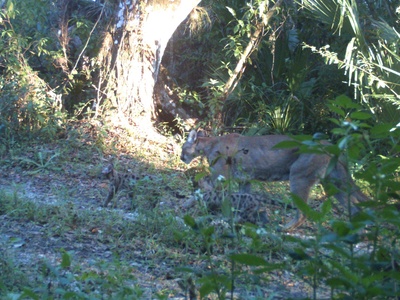
Florida Panther
A critically endangered cougar subspecies found in southern Florida’s forests and swamps. It is the official state animal of Florida and a symbol of regional conservation efforts.
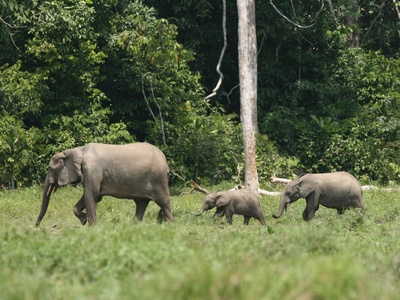
Forest Elephant
Now recognized as a distinct species from the African savanna elephant. It is smaller, with straighter tusks, and is critically adapted to life in the dense rainforests of Central and West Africa.

Fraser’s Dolphin
A social and fast-swimming dolphin of the deep tropical oceans. It was only known from a single skull until the 1970s and is recognized by its stocky body and short beak.
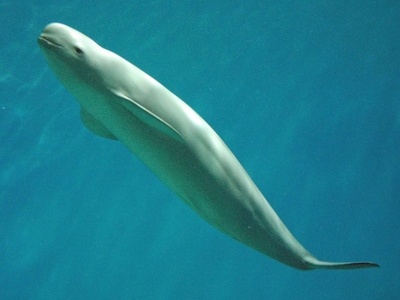
Finless Porpoise
A unique porpoise lacking a true dorsal fin, found in the coastal waters and some freshwater rivers of Asia. It has a small, stocky body and a friendly, “smiling” face.
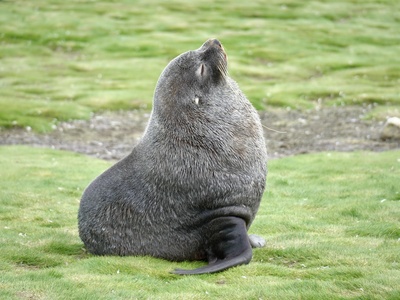
Antarctic Fur Seal
A seal species that breeds on subantarctic islands. Despite its name, it rarely ventures to mainland Antarctica. It was nearly hunted to extinction for its dense fur.
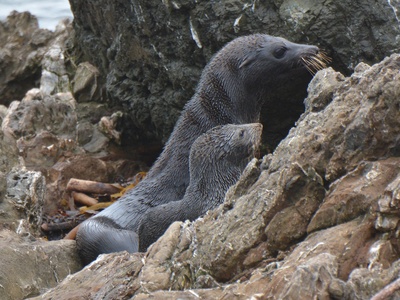
Guadalupe Fur Seal
Once thought extinct, this seal has made a remarkable recovery. It breeds almost exclusively on Guadalupe Island off the coast of Mexico and is known for its thick, luxurious coat.
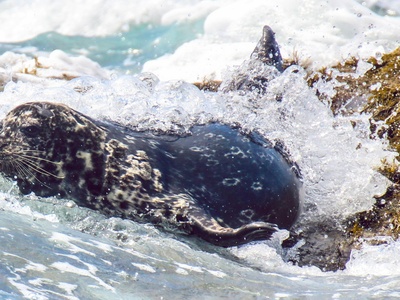
Northern Fur Seal
A seal of the North Pacific, known for spending most of its life at sea. It comes ashore on islands in the Bering Sea to breed in massive, dense colonies called rookeries.

Fat-tailed Dunnart
A small, mouse-like carnivorous marsupial from Australia. It stores fat in its carrot-shaped tail, which it uses as an energy reserve during lean times.

Feathertail Glider
The world’s smallest gliding mammal, about the size of a small mouse. This Australian possum has a unique feather-like tail that it uses as a rudder when it glides.

Fat Sand Rat
A gerbil-like rodent from North Africa and the Middle East. Despite its name, it is not a true rat and is notable for its ability to thrive on salty desert plants.
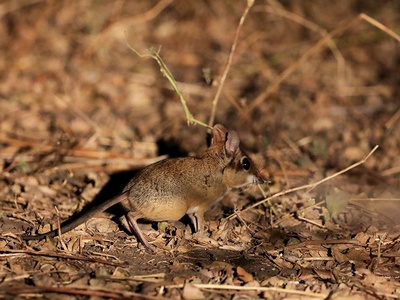
Four-toed Elephant Shrew
Also known as a sengi, this small African mammal has a long, flexible snout resembling an elephant’s trunk. It is incredibly fast, using a network of cleared trails to hunt insects.

Field Mouse
Also known as the Wood Mouse, this is one of the most common mammals in Europe. It is a small rodent with large eyes and ears, known for its ability to jump high when startled.
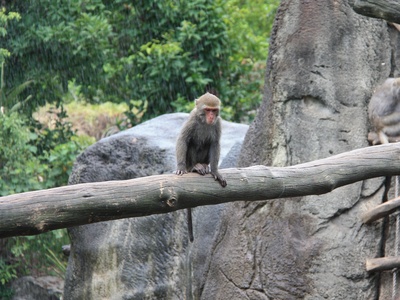
Formosan Rock Macaque
A species of monkey endemic to the island of Taiwan. They are highly social, living in multi-male, multi-female groups, and have adapted to a wide range of forest habitats.
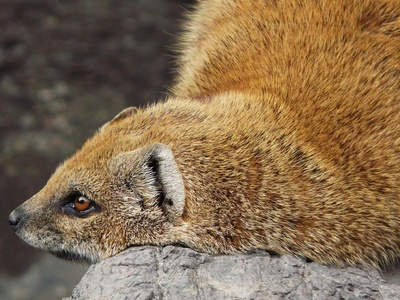
Fox Mongoose
Also called the Yellow Mongoose, this small carnivore is native to southern Africa. It lives in social colonies in underground burrows and is known for its bushy, fox-like tail.
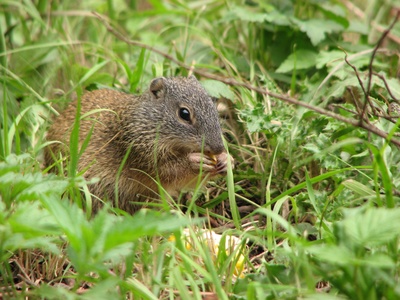
Franklin’s Ground Squirrel
A species of squirrel native to the tallgrass prairies of North America. It is more secretive than other ground squirrels and spends a significant amount of its life hibernating.
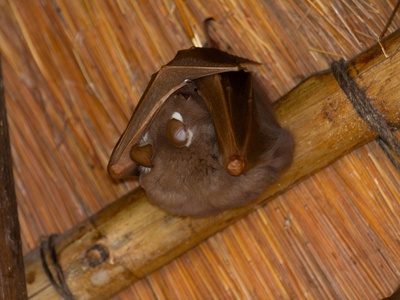
Fringe-lipped Bat
A clever bat from Central and South America that specializes in hunting frogs. It can distinguish between poisonous and non-poisonous frogs just by listening to their calls.
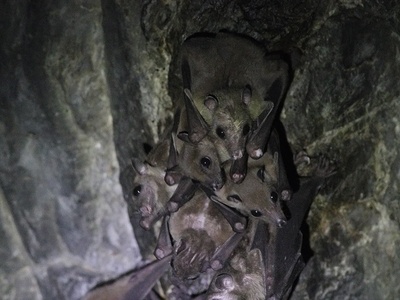
Fulvous Fruit Bat
A widespread fruit bat in South and Southeast Asia. It is one of the few fruit bats that uses a simple form of echolocation (tongue-clicking) to navigate in dark caves.
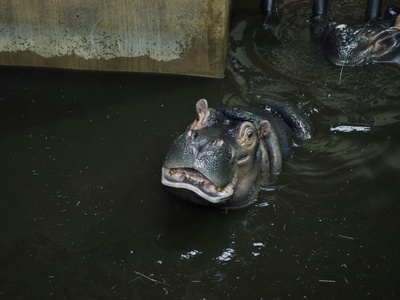
False Water Rat
A rare and endangered rodent from Australia and New Guinea. It lives in coastal mangrove and wetland habitats, building impressive mud nests and feeding on small invertebrates.
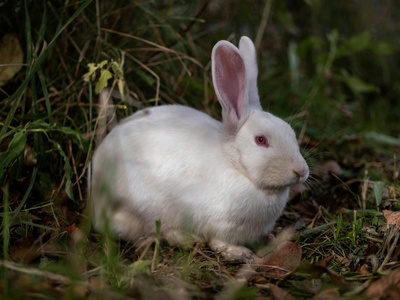
Forest Rabbit
A small wild rabbit found in tropical and subtropical forests of Central and South America. It is a solitary, nocturnal animal, also known as the Tapeti.

Forest Shrew
A common species of shrew found in the forests and grasslands of southern Africa. Like other shrews, it has a very high metabolism and must eat almost constantly to survive.
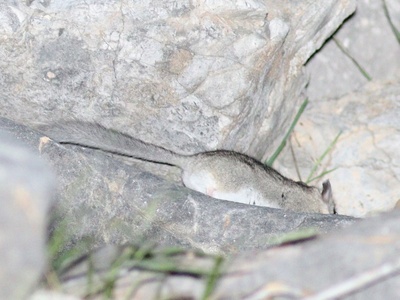
Forest Dormouse
A small, squirrel-like rodent found across Europe and Asia. It is an agile climber with a bushy tail, and it hibernates for long periods during the winter in a nest or hollow tree.


